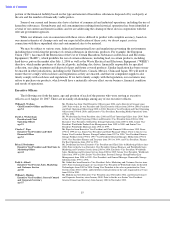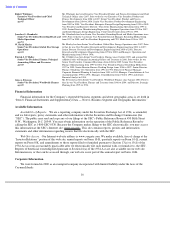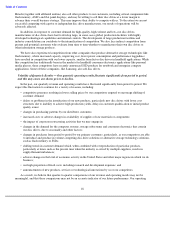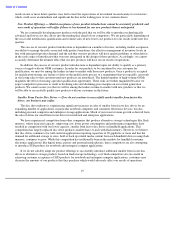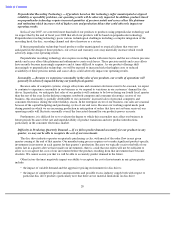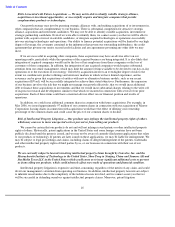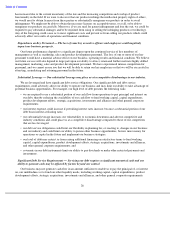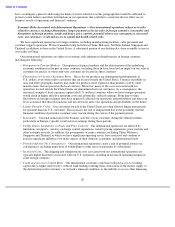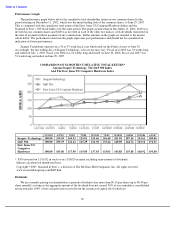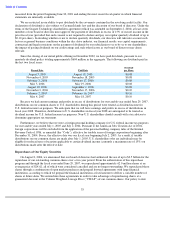Seagate 2006 Annual Report Download - page 26
Download and view the complete annual report
Please find page 26 of the 2006 Seagate annual report below. You can navigate through the pages in the report by either clicking on the pages listed below, or by using the keyword search tool below to find specific information within the annual report.
Table of Contents
Additional causes of declines in demand for our products in the past have included announcements or
introductions of major new operating systems or semiconductor improvements or changes in consumer preferences,
such as the shift from desktop to notebook computers. We believe these announcements and introductions have from
time to time caused consumers to defer their purchases and made inventory obsolete. Whenever an oversupply of
disc drives causes participants in our industry to have higher than anticipated inventory levels, we experience even
more intense price competition from other disc drive manufacturers than usual.
Dependence on Distributors —
We are dependent on sales to distributors, which may increase price erosion and
the volatility of our sales.
A substantial portion of our sales has been to distributors of desktop disc drive products. Product qualification
programs in this distribution channel are limited, which increases the number of competing products that are
available to satisfy demand, particularly in times of lengthening product cycles. As a result, purchasing decisions in
this channel are based largely on price, terms and product availability. Sales volumes through this channel are also
less predictable and subject to greater volatility than sales to our OEM customers.
To the extent that distributors reduce their purchases of our products or prices decline significantly in the
distribution channel, and to the extent that our distributor relationships are terminated, our revenues and results of
operations would be adversely affected.
Importance of Time-to-Market — Our operating results may depend on our being among the first-to-market
and achieving sufficient production volume with our new products.
To achieve consistent success with our OEM customers, it is important that we be an early provider of new types
of disc drives featuring leading, high-quality technology and lower per gigabyte storage cost. Historically, our
operating results have substantially depended upon our ability to be among the first-to-market with new product
offerings. Our market share and operating results in the future may be adversely affected if we fail to:
If delivery of our products is delayed, our OEM customers may use our competitors’ products to meet their
production requirements. If the delay of our products causes delivery of those OEMs’ computer systems into which
our products are integrated to be delayed, consumers and businesses may purchase comparable products from the
OEMs’ competitors.
Moreover, we face the related risk that consumers and businesses may wait to make their purchases if they want
to buy a new product that has been shipped or announced but not yet released. If this were to occur, we may be
unable to sell our existing inventory of products that may have become less efficient and cost effective compared to
new products. As a result, even if we are among the first-to-market with a given product, subsequent introductions or
announcements by our competitors of new products could cause us to lose revenue and not achieve a positive return
on our investment in existing products and inventory.
Accounting Charges and Pre-Acquisition Contingencies not Previously Identified Related to Acquisition of
Maxtor — We expect the acquisition of Maxtor with Seagate will continue to result in additional accounting
charges, that may continue to have an adverse effect on our fiscal year 2008 operating results.
We expect that, as a result of the acquisition of Maxtor, our fiscal year 2008 results of operations will continue
to be adversely affected by non-cash accounting charges, the most significant of which relates to the amortization of
acquired intangible assets. In addition, pre-acquisition contingencies not previously identified will adversely affect
our results of operations.
23
•
consistently maintain our time
-
to
-
market performance with our new products;
•
produce these products in sufficient volume;
• qualify these products with key customers on a timely basis by meeting our customers’ performance and
quality specifications; or
•
achieve acceptable manufacturing yields, quality and costs with these products.




